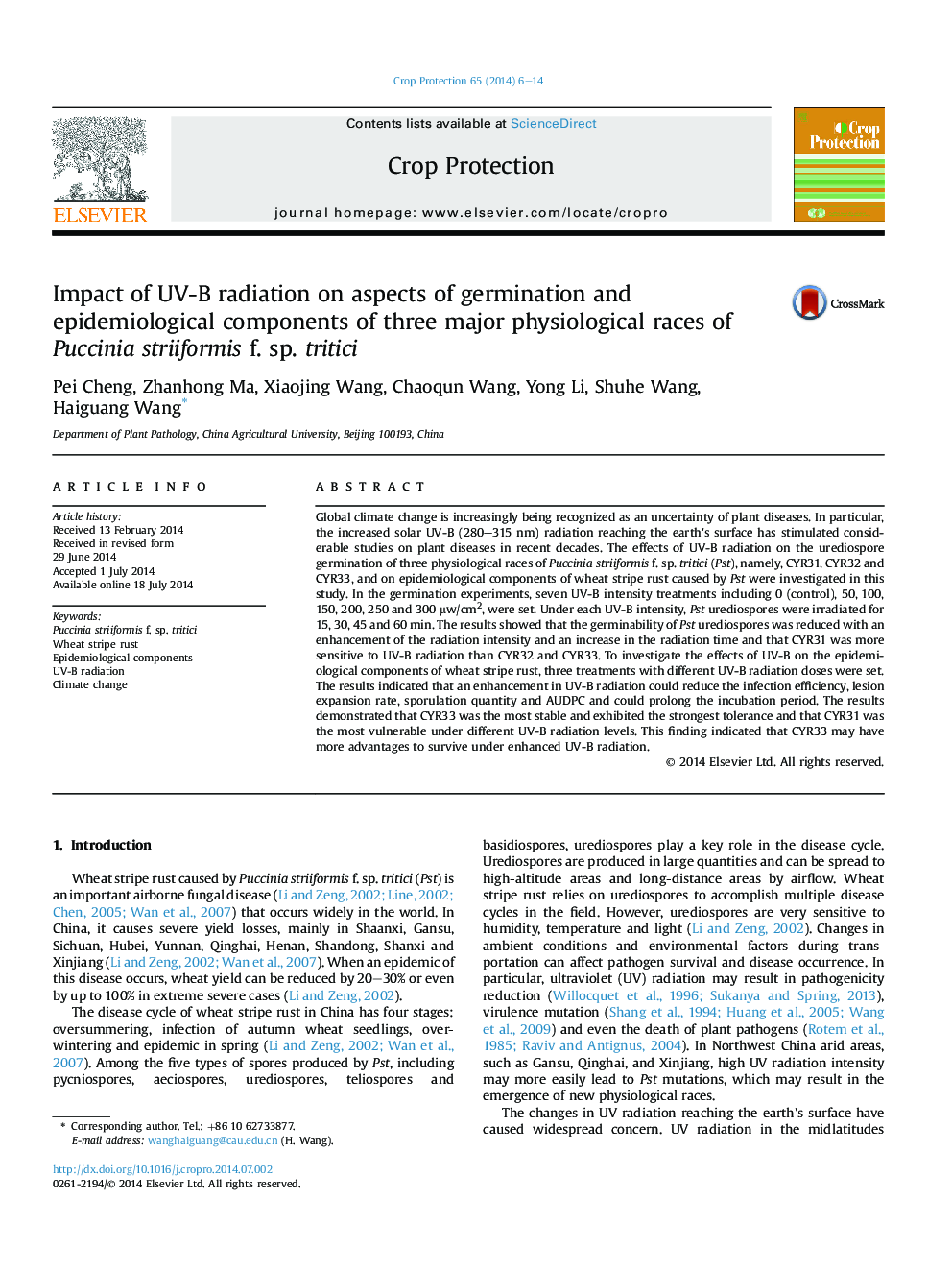| کد مقاله | کد نشریه | سال انتشار | مقاله انگلیسی | نسخه تمام متن |
|---|---|---|---|---|
| 4505800 | 1624322 | 2014 | 9 صفحه PDF | دانلود رایگان |

• We investigate the response to UV-B radiation of three main races of wheat stripe rust in China.
• Pst urediospore germination can be reduced by UV-B radiation.
• Enhanced UV-B radiation can reduce pathogenicity of wheat stripe rust.
• Tolerance to UV-B radiation of CYR31, CYR32 and CYR33 successively increases.
• UV-B tolerance of new emerged races that become dominant races may increase.
Global climate change is increasingly being recognized as an uncertainty of plant diseases. In particular, the increased solar UV-B (280–315 nm) radiation reaching the earth's surface has stimulated considerable studies on plant diseases in recent decades. The effects of UV-B radiation on the urediospore germination of three physiological races of Puccinia striiformis f. sp. tritici (Pst), namely, CYR31, CYR32 and CYR33, and on epidemiological components of wheat stripe rust caused by Pst were investigated in this study. In the germination experiments, seven UV-B intensity treatments including 0 (control), 50, 100, 150, 200, 250 and 300 μw/cm2, were set. Under each UV-B intensity, Pst urediospores were irradiated for 15, 30, 45 and 60 min. The results showed that the germinability of Pst urediospores was reduced with an enhancement of the radiation intensity and an increase in the radiation time and that CYR31 was more sensitive to UV-B radiation than CYR32 and CYR33. To investigate the effects of UV-B on the epidemiological components of wheat stripe rust, three treatments with different UV-B radiation doses were set. The results indicated that an enhancement in UV-B radiation could reduce the infection efficiency, lesion expansion rate, sporulation quantity and AUDPC and could prolong the incubation period. The results demonstrated that CYR33 was the most stable and exhibited the strongest tolerance and that CYR31 was the most vulnerable under different UV-B radiation levels. This finding indicated that CYR33 may have more advantages to survive under enhanced UV-B radiation.
Journal: Crop Protection - Volume 65, November 2014, Pages 6–14